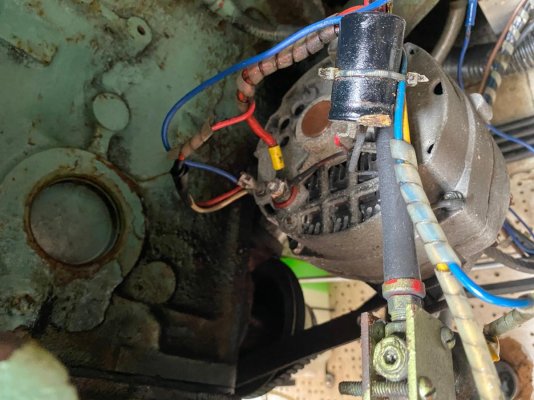Hi all
New to the site and as a Grand Banks 32 owner I'm a castaway from the old owners forum.
Question on alternator set up for my old Lehman 120. Seems I'm not getting a good charge back into battery bank while running, In fact one of the engine switches ( oil pressure switch) on panel opened while cruising and wouldn't close. Shortly after other electronics and panel gauges started to fade. Get back to dock, batteries are flat.
Recharged batteries. Got 12.7 v , then started engine, batteries fell to 12.4 an didn't move. So assume it in the alternator area. Its an older Delco Remy. On inspection the back of the alternator has a small POT looking device wired to the case and to the main terminal ( photo below ) , would this be the voltage regulator ( an external one)? Its corroded and old. Should i look for a replacement for this part if its the regulator or just get a new alternator.
.
Chris
New to the site and as a Grand Banks 32 owner I'm a castaway from the old owners forum.
Question on alternator set up for my old Lehman 120. Seems I'm not getting a good charge back into battery bank while running, In fact one of the engine switches ( oil pressure switch) on panel opened while cruising and wouldn't close. Shortly after other electronics and panel gauges started to fade. Get back to dock, batteries are flat.
Recharged batteries. Got 12.7 v , then started engine, batteries fell to 12.4 an didn't move. So assume it in the alternator area. Its an older Delco Remy. On inspection the back of the alternator has a small POT looking device wired to the case and to the main terminal ( photo below ) , would this be the voltage regulator ( an external one)? Its corroded and old. Should i look for a replacement for this part if its the regulator or just get a new alternator.
.
Chris

